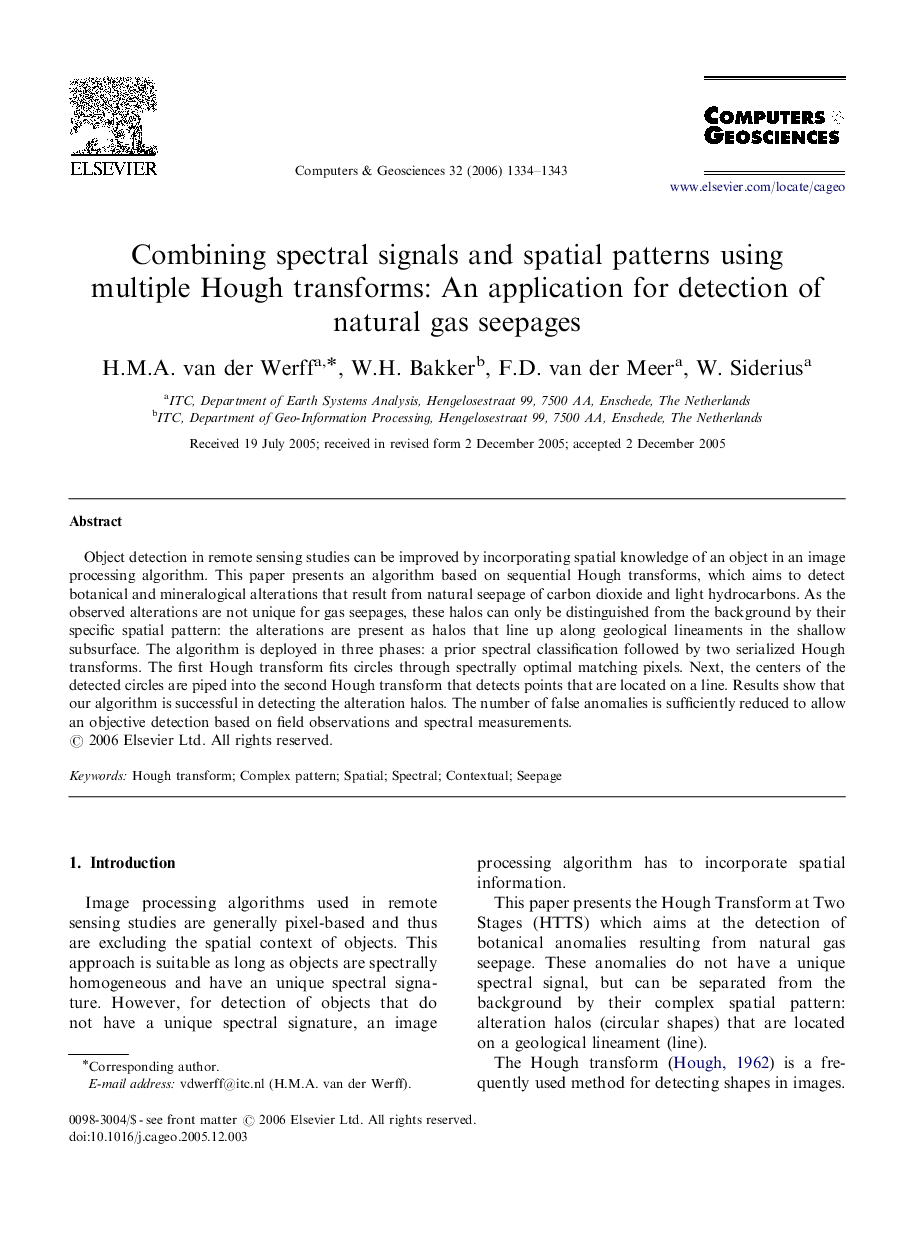| Article ID | Journal | Published Year | Pages | File Type |
|---|---|---|---|---|
| 508258 | Computers & Geosciences | 2006 | 10 Pages |
Object detection in remote sensing studies can be improved by incorporating spatial knowledge of an object in an image processing algorithm. This paper presents an algorithm based on sequential Hough transforms, which aims to detect botanical and mineralogical alterations that result from natural seepage of carbon dioxide and light hydrocarbons. As the observed alterations are not unique for gas seepages, these halos can only be distinguished from the background by their specific spatial pattern: the alterations are present as halos that line up along geological lineaments in the shallow subsurface. The algorithm is deployed in three phases: a prior spectral classification followed by two serialized Hough transforms. The first Hough transform fits circles through spectrally optimal matching pixels. Next, the centers of the detected circles are piped into the second Hough transform that detects points that are located on a line. Results show that our algorithm is successful in detecting the alteration halos. The number of false anomalies is sufficiently reduced to allow an objective detection based on field observations and spectral measurements.
